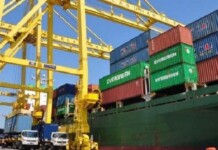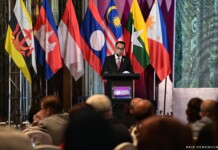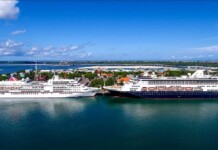Australia has avoided the embarrassment of having one of its top tourist attractions put on the United Nations’ list of endangered heritage sites, but has been called on to report back on its conservation efforts within the next 18 months.
A draft decision by the U.N. Educational, Scientific and Cultural Organization’s World Heritage Committee released late Friday acknowledged a 35-year plan outlined earlier this year by Prime Minister Tony Abbott that pledged additional funding for preserving the reef and sets targets for restoring water quality.
However, the committee said the government needed to provide a report by December 2016 confirming the launch of its plans had been effective, followed by a review in 2020 detailing the results for each of the government’s targets.
The committee’s recommendation not to add the reef to its list of endangered sites was welcomed by the conservative government and the opposition Labor party, though environmental groups said the country should consider itself on probation.
The committee, referring to a 2014 report on the Great Barrier Reef, said that the outlook for the site was poor, and that climate change, poor water quality and the effects of coastal development were major threats to its health. Crucial habitats, species and ecosystems in central and southern inshore areas of the reef continued to deteriorate, it said.
The World Heritage Committee is due to confirm its draft decision at its June meeting. A blacklisting would have been a major blow to Australia’s environmental reputation.
The Great Barrier Reef stretches for more than 2,300 kilometers along much of Australia’s east coast, taking in a maze of about 3,000 coral reefs and 1,050 islands. It is home to hundreds of types of coral, some 1,500 types of fish, rare snubfin dolphins and several turtle varieties.
It was listed as a World Heritage property in 1981. But according to Australia’sInstitute of Marine Science, the reef has lost about half its coral cover over the past 30 years and is under threat from rising sea temperatures, water pollution and coastal development.
The U.N. committee said a number of issues within the government’s plans to protect the reef still needed to be completed, including translating them into legislation and putting in place sustained and adequate financing.
Environment minister Greg Hunt said the committee’s decision, which included dropping all references to “in danger” in its draft, acknowledged the strong response and the significant work undertaken by the federal and Queensland state governments. Already the governments were working to implement plans and prioritize investment, he said.
Prime Minister Abbott in March pledged 100 million Australian dollars ($77 million) in additional funding and said plans would be put in place to improve water quality along the reef, by reducing sediment and pesticides.
His government also would ban the dumping of dredged mud and rock within the reef’s 344,000-square-kilometer marine park, reversing a decision last year to allow millions of tons of dredged material from a nearby coal-port development to be dumped there.
Environmental group WWF said draft decision was consistent with science and in the best interests of the reef, but meant that if the government plans weren’t delivered the site could still be declared in danger in 2020. (Ast)
Source: nasdaq.com















